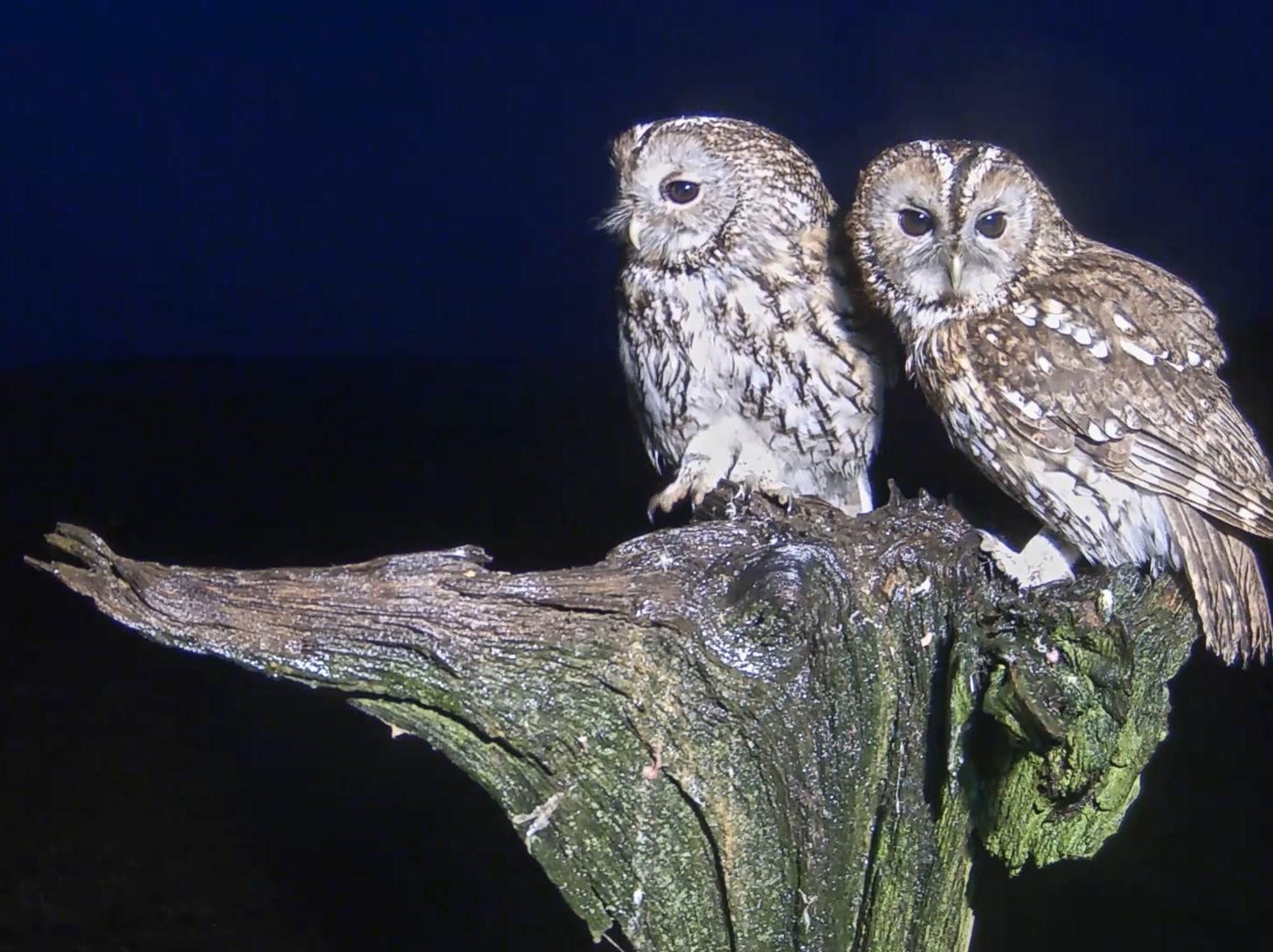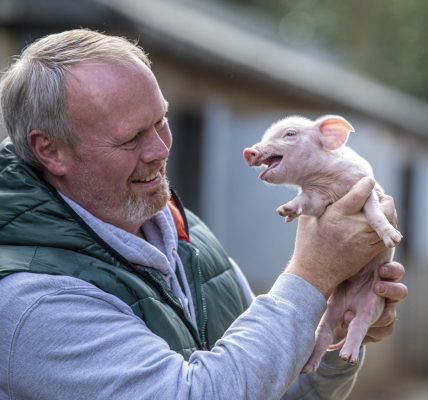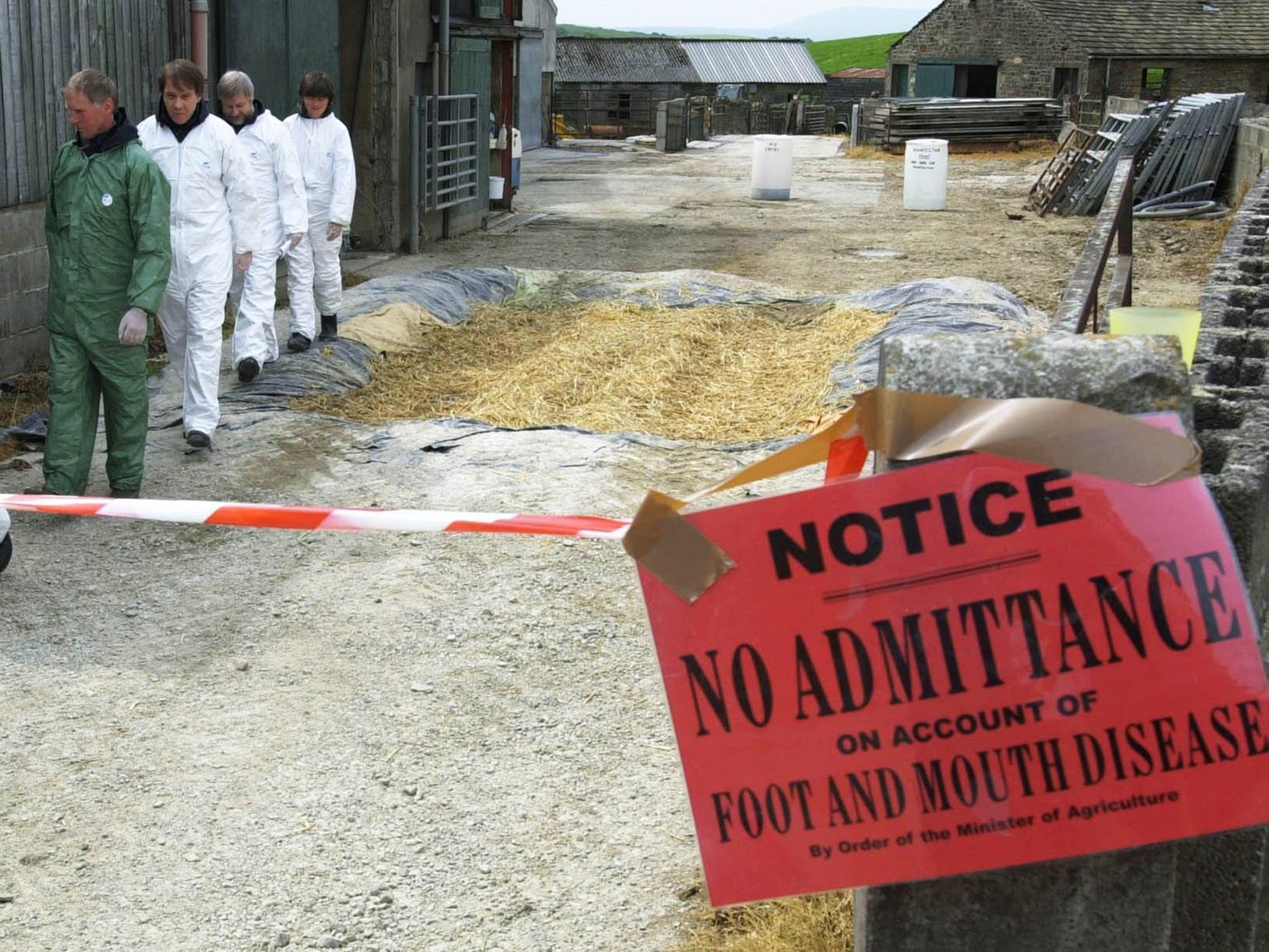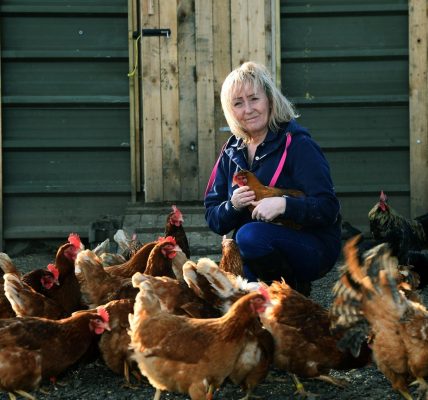A rare glimpse inside the nest of tawny owls as Luna and Bomber prepare for their chicks to hatch at wildlife artist Robert E Fuller's home
A rare glimpse inside the nest of tawny owls as Luna and Bomber prepare for their chicks to hatch at wildlife artist Robert E Fuller's home
I am expecting two tawny owl chicks to hatch next week, and I hope to share the moment they emerge from their eggshells, all feather-wet and wobbly, on my YouTube livestream.
The eggs were laid in mid-January, the earliest I have known tawny owls to have a clutch here in Thixendale. Normally, this species lay in late February or March.
Tawny owls are very secretive, so I’ve only managed to persuade them to raise their chicks inside a nest with hidden cameras a handful of times before.
Last year, just when this tawny pair seemed intent on laying their eggs in one of my bespoke nest boxes, they changed their minds at the last moment and raised their chicks off camera.
Now, owl fans from around the world can join me to watch the female tawny owl, nicknamed Luna, as she incubates her two large white eggs.
She and her mate, Bomber, are a well-established pair and regular visitors to my garden. They tend to rule the skies. In fact, Bomber, who has lived at here since 2011, gets his name from his fiercely territorial behaviour.
Many a kestrel and barn owl that share this territory have been knocked to the ground during one of his attacks and one barn owl, named Grete, has a broken feather to prove it. Even the stoats here know not to get too close!
But despite of his ferocity, Bomber is one of my favourite owls. Recognisable by a dark stripe of feathers on his face and his beautiful ginger colouring, he is a very handsome bird.
Despite his considerable age – wild tawny owls have an average lifespan of just four years although the British Trust for Ornithology has a record of one that lived 23 years, he shows no sign of slowing down.
He is also a tender parent. Last year, he and Luna raised six chicks in the valley below my gallery. Two of these were rescued owlets, named Eric and Ernie, whom I introduced alongside Bomber and Luna’s natural chicks with the hope that they would adopt them and raise them to be wild.
I spent hours under a line of sycamore trees peering through my binoculars at the branches above as Bomber brought food to these owlets after they had fledged.
Interestingly, as soon as this clutch had grown up and left the territory, Bomber and Luna began inspecting a nest box I had made from an old beech stump.
Bomber guarded this new nest box with vigour and I even filmed him evict first a barn owl and then an inquisitive squirrel from the site.
This defensive behaviour is a clear sign that tawny owls are looking ahead to the next breeding season and although I was surprised it was so soon, I was pleased because the beech stump site was rigged with cameras.
Soon they began re-affirming their bonds and I watched as they lovingly preened one another. By the new year I noticed they were spending more and more time in the nest together.
As January unfolded, I noticed the pair working together to tidy the nest box. Bomber seemed to be preoccupied with restorations to the nest entrance, forever wobbling then making good a loose section of wood. Meanwhile Luna spent her time tidying up the nest floor, removing small twigs and breaking up hard clods created by old pellets.
Then I noticed Luna dig a shallow indent into the floor of the box. This behaviour is an important sign that she was preparing to lay eggs.
Owls carefully prepare their scrape over several weeks before they lay. It is as if they are trying them out for optimal positioning and comfort. So, I was surprised when hours after this initial scrape she settled down and laid her first egg. The egg-laying process is quite arduous for birds, this one took a couple of hours of effort to be delivered.
A few hours later Luna seemed tense, appearing to hear something outside. She promptly left the nest and her newly laid egg. Female tawny owls I have watched in the past always guard their eggs carefully, so I was surprised.
When neither owl reappeared for the rest of that night, I began to worry. It was bitterly cold, and the egg lay alone in the nest until early the next morning when Bomber arrived. It was the first time he had seen the egg and he reacted swiftly.
After tenderly tapping the egg with his beak, he left the nest, calling for Luna to return. Within minutes she reappeared but she did not start to brood.
Instead, she stood a distance away, looking in the opposite direction. A shake of her head told me that she was feeling unwell. Later that day she flew from the nest and ate hungrily from some food I had put out for her.
When she returned, her behaviour was more positive – maybe she just needed a boost of energy – and quickly settled down to incubate.
Precisely 66 hours later, Luna laid her second egg – this time with Bomber hooting alongside her to provide moral support. And she has been sitting tight on the clutch ever since, leaving the eggs only for occasional ten minutes to feed, stretch her wings and defecate.
Unlike barn owls, tawny owls are very house proud and rarely soil their nests. So, these brief absences, of which there are less than a handful each night, are necessary.
Last week, the weather turned raw and as temperatures dropped to -14C and the countryside disappeared under a deep layer of snow, I decided to leave out extra food to help Luna.
Not only does she need to recover the energy she used in laying, but needs to stay healthy while brooding. Tawny eggs are only slightly smaller than chicken eggs and so relatively big for birds a fifth of the size.
So far, she seems to be doing well and Bomber is keeping a watchful eye over her. Their eggs are due to hatch any time from February 24.
To watch Bomber and Luna and see their eggs hatch tune into Robert’s livestream on his YouTube channel Robert E Fuller.










